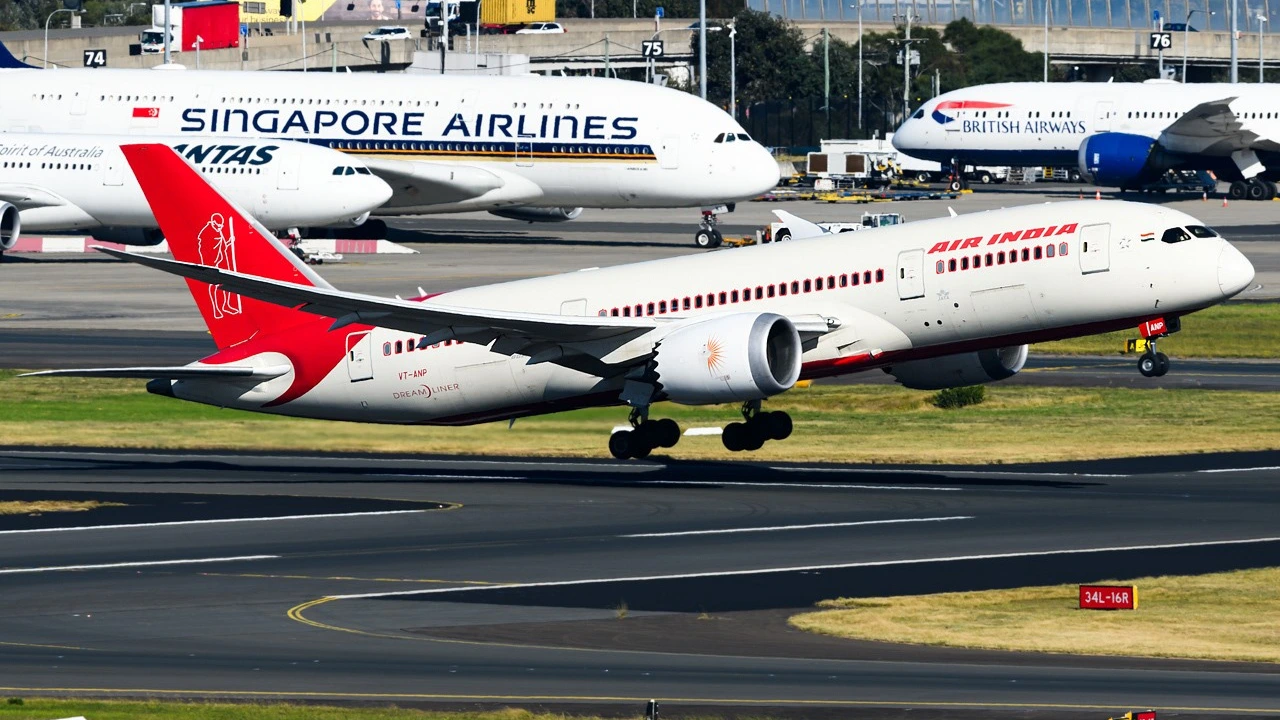Singapore Airlines Faces Prolonged Earnings Pressure as Air India Losses Deepen
Singapore Airlines Faces Prolonged Earnings Pressure as Air India Losses Deepen
By
Rachel Steinberg
Last updated:
November 14, 2025
First Published:
November 14, 2025

A Steep Profit Collapse Raises Fresh Concerns
Singapore Airlines is navigating one of its most challenging financial periods in recent years, with analysts warning that a sustained drag from Air India could keep earnings under pressure through the next two financial years. The carrier’s stock fell about 3% on Friday after reporting a sharp decline in second-quarter results, intensifying worries about the financial impact of its 25.1% ownership in Air India.
SIA posted an 82% drop in quarterly earnings, a dramatic shortfall that caught markets off guard. For the first half of the fiscal year, net profit fell 67.8% to 239 million Singapore dollars, signaling weakened profitability at a time when global airlines are benefiting from robust travel demand.
Despite the downturn, Singapore Airlines announced a special dividend commitment of 10 Singapore cents per share annually over three financial years — totaling roughly SG$900 million — as well as an interim dividend of 5 cents per share to be paid on December 23.
Air India Losses Dominate the Earnings Story
Air India has increasingly become the pivotal factor shaping sentiment around Singapore Airlines’ outlook. Analysts say the Indian carrier’s extensive restructuring, ongoing operational issues, and heavy capital requirements are weighing down SIA’s results.
SIA’s share of losses from associated companies — heavily influenced by Air India — reached 295 million Singapore dollars in the second quarter alone. The airline began equity accounting for Air India in December 2024, after the latter completed its merger with Vistara, which SIA co-owned with India’s Tata Sons.
DBS Bank equity research analyst Tabitha Foo said that Air India’s financial trajectory suggests that SIA’s earnings could remain constrained until at least FY2026 or FY2027.
“Air India’s turnaround is a massive undertaking. A meaningful profit recovery will take time, and that naturally weighs on SIA’s earnings,” Foo told CNBC.
The strain intensified earlier this year when Bloomberg reported that Air India was seeking at least 100 billion rupees (US$1.1 billion) in fresh support from SIA and Tata Sons. The funds are earmarked for system upgrades, maintenance infrastructure, and operational stabilization after a devastating June crash that claimed more than 240 lives.
Morningstar’s Lorraine Tan said investors need clearer visibility into the nature of Air India’s losses — whether they stem from expansion-related depreciation or deeper structural issues.
“If the losses are largely tied to ramp-up spending, Air India may be closer to EBITDA breakeven than feared,” Tan explained. “But if there are underlying operational losses, shareholders deserve transparency.”
SIA’s Own Operating Challenges
Although Singapore Airlines continues to benefit from strong passenger traffic, the latest results revealed several pressures beyond Air India:
- Revenue for the quarter came in at SG$4.89 billion, slightly below analyst expectations of SG$4.94 billion.
- Net profit was just SG$52 million, far short of the SG$181 million analysts had projected.
- Interest income fell by SG$42 million due to rate cuts and reduced cash reserves — the result of dividend payouts and loan repayments.
SIA also highlighted persistent uncertainty in the global cargo market, citing trade disruptions, geopolitical tensions, and supply chain bottlenecks. Cargo yields have softened from their pandemic-era highs but remain volatile.
Expanding Alliances Amid Regional Competition
Even as earnings falter, Singapore Airlines has continued to strengthen its international partnerships to defend market share and improve network reach.
In September, the carrier expanded its codeshare agreement with Vietnam Airlines, enhancing connectivity on Southeast Asian routes.
In October, SIA further deepened its joint venture with the Lufthansa Group, adding Brussels Airlines to improve long-haul connectivity between Europe and the Asia-Pacific.
These moves come as regional competition intensifies, with Middle Eastern carriers expanding aggressively and Chinese airlines restoring long-haul capacity.
Travel Demand Resilient, Cargo Outlook Clouded
The airline said that passenger traffic remains healthy going into the traditional third-quarter travel peak. Forward bookings are strong across key markets, supported by steady corporate travel recovery and leisure demand.
However, the cargo segment tells a more complex story. SIA noted that trade flows remain vulnerable to shifting global policies, currency fluctuations, and softer manufacturing output across Asia and Europe.
“The airline industry continues to face challenges from geopolitical tensions, macroeconomic headwinds, inflationary cost pressures, and supply chain constraints,” the carrier said.
What Comes Next for SIA
Singapore Airlines remains confident in its long-term strategy but acknowledges that Air India will continue to dominate its financial narrative. With restructuring efforts expected to take years, analysts say SIA must balance cautious financial management with continued investment in fleet renewal, technology, and strategic alliances.
For now, robust travel demand is cushioning the blow — but the airline’s profitability hinges heavily on how swiftly Air India can stabilize and execute its multi-year transformation plan.
SIA insists that it remains committed to working closely with Tata Sons to support the turnaround, even as investors push for clearer guidance on future capital requirements and potential risks.
The road ahead for Singapore Airlines is navigable — but far from turbulence-free.
Popular articles
Subscribe to unlock premium content
The Rise of Silent Walking Tours in Historic Cities

The Rise of Ultra-Niche Cooking Classes Focused on Historical or Regional Recipes

The Rise of One-Person Dining Experiences for Ultra-Introverts in Major Cities

The Rise of Silent Walking Tours in Historic Cities

The Rise of Ultra-Niche Cooking Classes Focused on Historical or Regional Recipes

The Rise of Silent Walking Tours in Historic Cities









